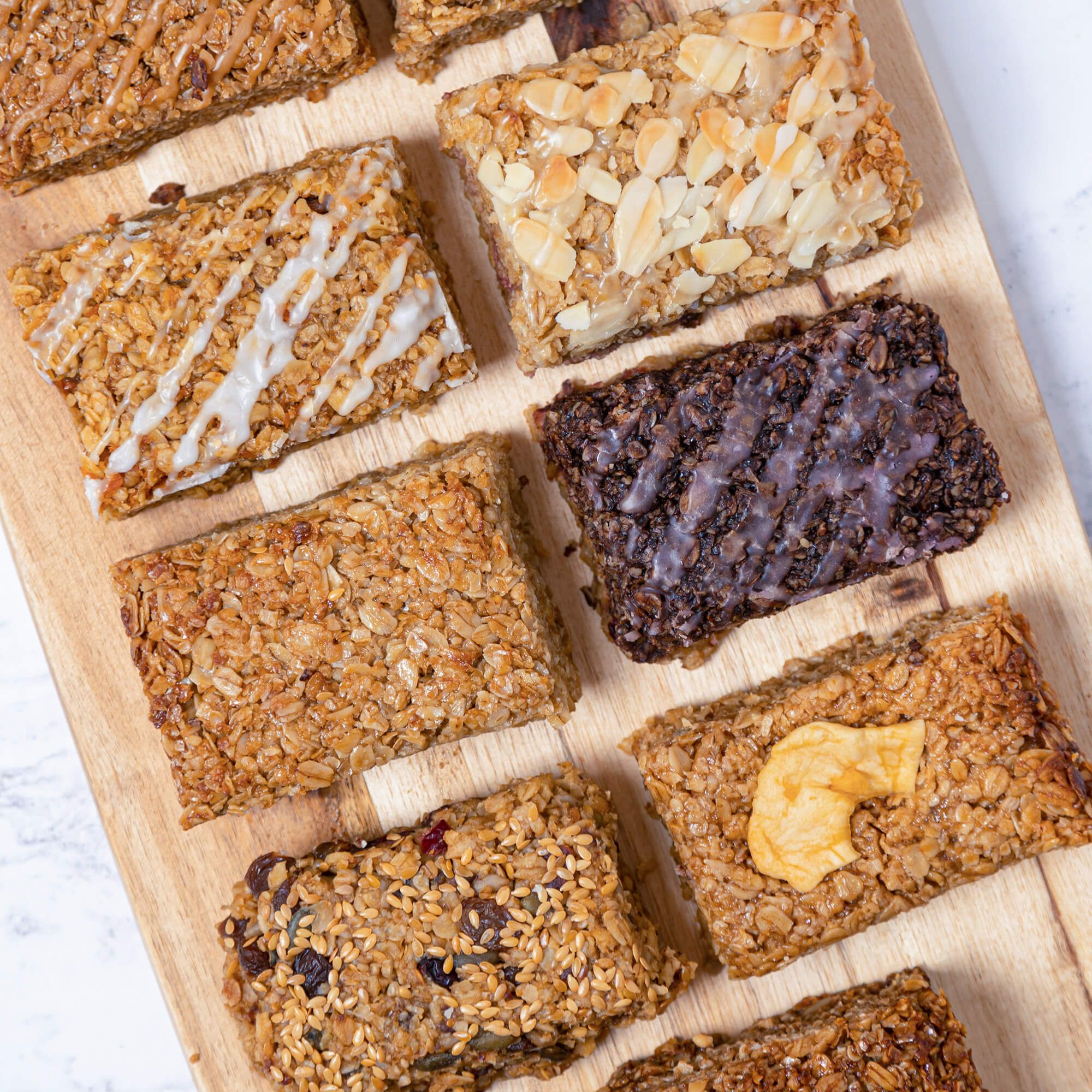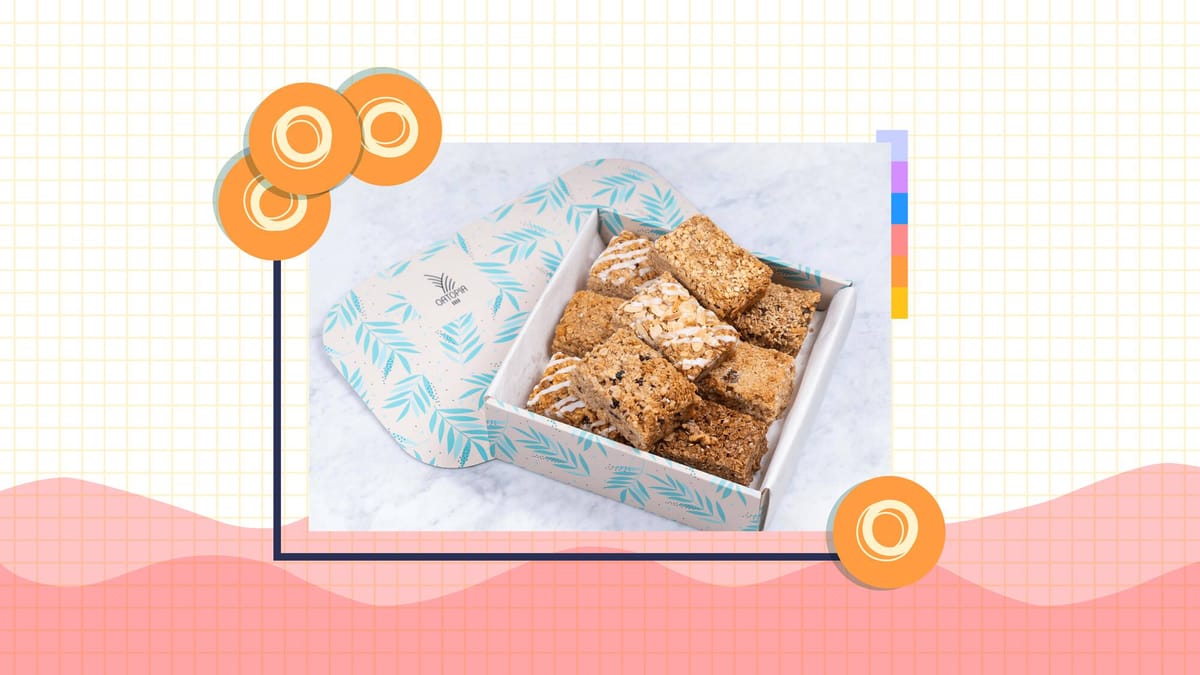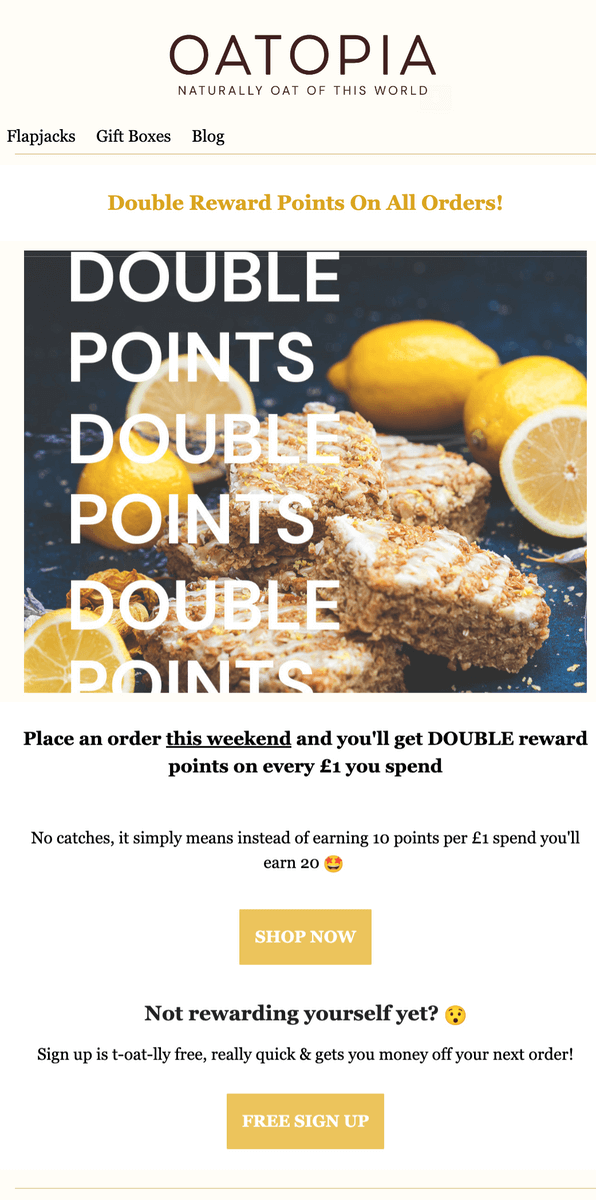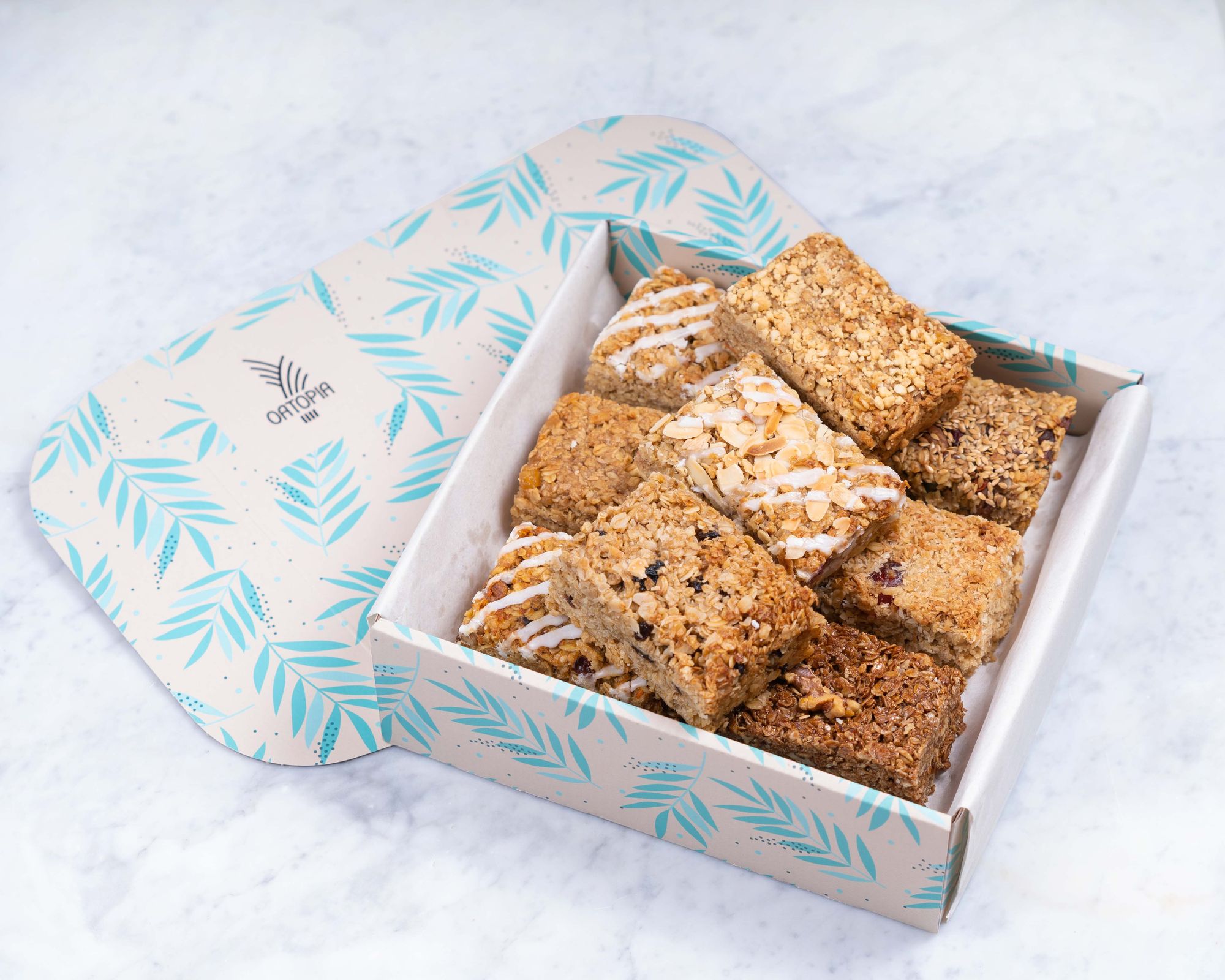Inspired by her desire to help others lead a healthy lifestyle, Tamar Coleman decided to create the product she was struggling to find herself—a nutritionally replenishing snack that was still delicious. As an endurance athlete, Tamar was frustrated with the snack options at the sporting and fitness events she attended. That’s when she decided to share her family’s passion for the humble oat and flapjack, catering various community events. With that, Oatopia was born.
Folding in loyalty to an established family-owned business
Since launching in 2011 in Sussex, England, Oatopia now offers over 20 different flapjack flavors, including the fan favorite Breakfast Bar, Peanut Butter, Salted Caramel, Almond Bakewell, Carrot Cake, and Biscoff flavors. “Our community has steadily grown over the years, and we receive messages from customers all the time to say how much they love and appreciate our products,” shares Sophie Coleman, Marketing Director of Oatopia.

With a loyal following, Oatopia took its community to new heights with the introduction of its loyalty program, Oat of this World Perks. Learn how this family-owned oat brand configured a winning rewards program in less than 1 year.

Get the most oat of your loyalty program with Oatopia’s 5 tips
Deciding to launch a loyalty program is a great first step. But don’t adopt a “set it and forget it” mentality. Just as you do with email marketing or social media, you need to test and adjust your loyalty program to fit your customers’ needs.
So what’s the secret to its success? Let’s find out.
1. Align your reward redemption levels with purchase frequency
Increasing profits can come in two forms–increasing average order value or purchase frequency. One of the best ways to increase purchase frequency is by giving your customers a reason to come back sooner.

Oatopia has done a phenomenal job at this with its reward point values. Customers earn 10 points for every £1 spent and can redeem 100 points for £1 off their next order. This means that customers can earn a reward after spending only £10. But if we assume most customers spend around £35 per order to reach the free shipping threshold, then customers would earn 350 points or £3.50 on every order. With the average price of one flapjack being £3.50, Oatopia has configured its program perfectly to reward customers with one free flapjack every time they spend enough to earn free shipping.
2. Be generous with your points when you have low-cost items.
Oatopia offers customers 10 points for every £1 spent and £1 in rewards for every 100 points earned. This is a very generous 10% back on every £1 spent. “It encourages customers to continue spending in our store as they feel valued, therefore we have seen a good retention of new and old customers.”
3. Use bonus-point events to increase retention
As we mentioned, increasing purchase frequency is one way to increase profitability. The other is increasing average order value. This next strategy has the potential to increase both at the same time. Bonus point events, or double points days, are effective in re-engaging dormant customers by giving them extra motivation to shop again and they encourage your repeat customers to spend more during that period to earn more.

Oatopia recently ran a double point weekend, giving customers 20 points for every £1 spent, and informed its customers through an effective branded email campaign.

4. Let customers choose their reward value
There are several types of rewards you can offer–free shipping, free products, percentage-based discounts, and amount-based discounts. With discounts, you can either offer fixed or incremental rewards. With fixed rewards, you decide what percentage or amount customers will be working towards to redeem. With incremental rewards, you can set up a slider with a constant scale that customers can customize.

Oatopia has opted for the latter by allowing customers to redeem whatever value they want, given that 100 points = £1 off. With high consumables, such as food, this is a great option because it allows customers to redeem how they like. They can save a few bucks each time they shop or they can save up for a big reward later on. Offering incremental rewards caters to different types of customers.
5. Pair referrals with points for a winning recipe
Along with a well-configured points program, Oatopia offers a referral reward of £3 to both referring and referred customers. Not only does this give customers an immediate incentive to make a purchase, but the trust associated with getting a product recommendation from a friend encourages product trials from new customers. Once again, offering a generous reward of £3 gives customers nearly enough money to purchase one flapjack, reducing the risk associated with making a purchase. Referrals and points make the perfect pair by encouraging product trials through referrals and then turning those customers into loyal repeat purchasers through a point program.








